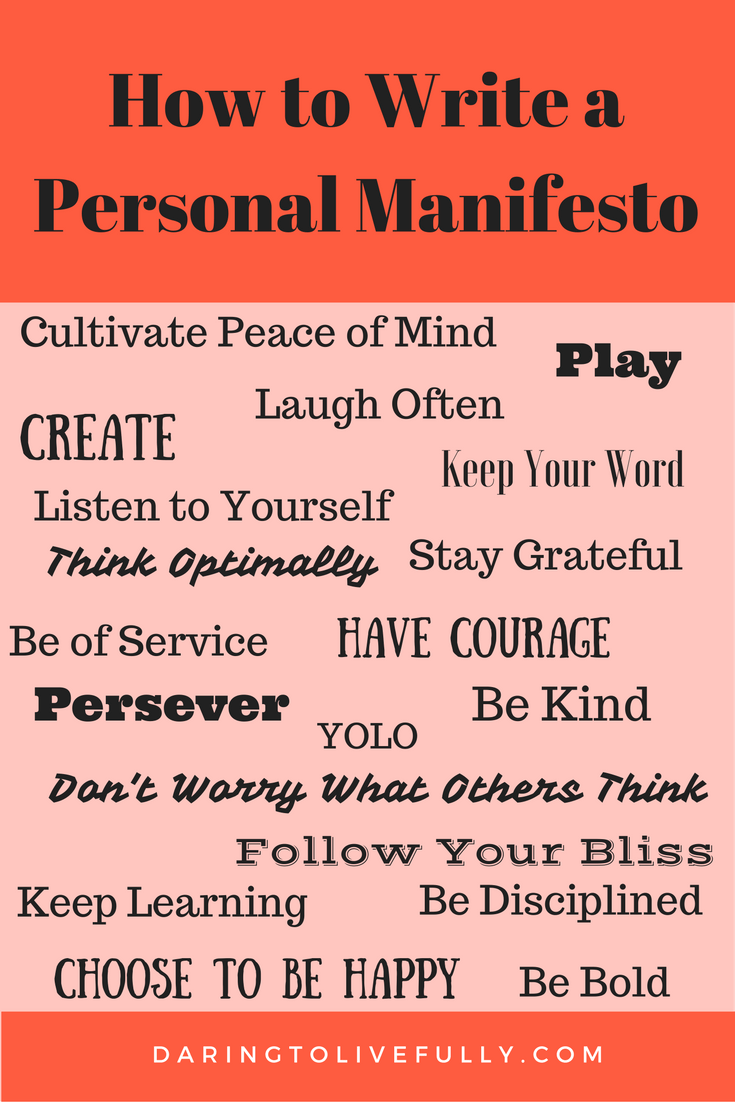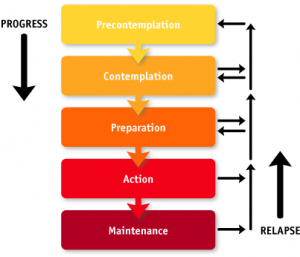 The law of inertia states that it is the tendency of an object to resist a change in motion. That is, an object at rest will stay at rest, unless it is acted on by an external force. The same is true of an object in motion.
The law of inertia states that it is the tendency of an object to resist a change in motion. That is, an object at rest will stay at rest, unless it is acted on by an external force. The same is true of an object in motion.
Think of a soccer ball lying on the ground. The soccer ball will not move from that spot, unless someone kicks it. When the ball has been kicked and it’s moving through the air, it won’t stop until the force of gravity forces it to drop down to the ground; once it’s rolling on the ground, it will continue rolling until friction forces it to come to a standstill.
What this means, when it comes to goal achievement, is the following:
- If at present you come home from work, grab a bag of chips, lie down on the couch, and turn on the TV, you’ll have a tendency to continue doing just that. Getting yourself to go out for a jog as soon as you get home from work, instead of plopping down on the couch, requires that you overcome inertia.
- If you want to start getting up half an hour earlier in order to start a writing practice, you have to overcome inertia.
- If you’re bored at your job and you’re thinking of starting a new business, you need to overcome inertia in order to create a business plan and start taking the action that’s necessary to get a new business started.
When there’s a goal that you want to achieve, one of the biggest hurdles that you’ll face is overcoming inertia in order to get yourself to start moving in the right direction. The good news is that once you initiate movement, the law of inertia helps you to keep moving and to continue taking action. Below you’ll find seven ways to overcome inertia and get yourself moving toward the achievement of your goals.
Shock Yourself Into Action
Fifty years ago psychologist Kurt Lewin proposed a three-step model for change. Lewin argued that individuals are “frozen in place” and they tend to resist change, even when presented with favorable opportunities. Therefore, the following is needed:
- Some sort of disruption, shock, or “unfreezing” is necessary.
- Change takes place as a result of the disruption.
- “Refreezing” in a new and different state.
Think of the following: you have a block of ice, but what you want is to have the ice frozen in a cone shape. First, you have to unfreeze the ice. Then, you mold the water into a cone. Lastly, you refreeze the water in the cone shape.
Likewise, when you want to make a change you have to start by unfreezing yourself; one way to do this is to shock yourself. You can shock yourself into taking action by asking yourself the following question: “What are the consequences if I don’t get started?” For example, if you’re overweight, the consequences of giving in to inertia instead of exercising and changing your diet include being at a high risk for having a stroke or a heart attack, as well as being more prone to diseases such as diabetes and cancer.
Here are some more questions which can shock you into action: “How much money am I losing by not getting started on this?” “How much interest would I be earning if I were investing all the money that I’m currently losing?” “What would that money mean for my retirement?”
If you can’t shock yourself into taking action, consider getting someone from the outside to do so. As an illustration, you could get a medical checkup. There’s nothing like a doctor telling you that your blood pressure and your cholesterol levels are through the roof—and that you’re running the risk of shortening your life span by several years if you don’t lose weight–to shock you into initiating an exercise program.
A business consultant can shock you into taking action by letting you know that if you don’t take action soon, your small business is likely to fail.
Secure Short Term Wins to Overcome Inertia
Produce enough short term wins—that is, quick wins—to energize the change and create momentum. It’s much more likely that you’ll be able to get yourself to move if your first goal is to “Run a 5K”, your second goal is to “Run a 10K” and so on, instead of setting the goal of “running a marathon” right off the bat.
Dangle a Carrot In Front of Yourself
You’ve no doubt heard the story of the farmer who got his donkey to pull a cart by hanging a carrot from a stick tied to the donkey’s head. Just like the donkey, one of our greatest motivators is the pursuit of pleasure. Choose an appropriate reward to give yourself once you’ve reached a certain goal, such as drinking a smoothie if you go out for a twenty-minute jog, or watching your favorite TV show after you’ve published a blog post.
Let the carrot give you the kick start that you need to get going on a goal which will later become intrinsically motivating. As an illustration, I’ve been jogging outdoors for two and a half years now. Although at first I had to promise myself rewards so that I would go out for a jog, now I do it because the activity of jogging is rewarding in and of itself.
Use a Stick
Of course, the farmer didn’t just use a carrot in order to get the donkey to move. He also used a stick to whip the donkey if the donkey refused to move. You can also use a stick to get yourself to overcome inertia and to begin moving toward your goal. After all, not only do we have a tendency to move toward pleasure, we have an even stronger tendency to move away from pain. What sticks can you use to propel yourself to take action?
Here are two ideas:
- Deny yourself a treat, such as your morning cup of coffee, unless you take action toward your goal.
- Charge yourself for every day that you fail to take action. For example, you could ask a friend to charge you $5 for every day that you fail to take action toward the achievement of your goal.
Fill Your Gas Tank
Sometimes you can’t get started on a task because you don’t have enough fuel—or energy– to get yourself to act. If this is the case, fill your gas tank before you attempt to take action toward the achievement of your goal. As an illustration, if you want to start going out for a jog every day when you get home from work, but you’re too tired to do so, you could do the following:
- Take a twenty minute nap.
- Drink some water.
- Eat a nutritious, healthy snack.
- Do some yoga to get your energy flowing.
Once your tank is full, it’s much more likely that you’ll have the energy that you’ll need in order to overcome inertia.
Create a Clear Vision of What You’re Trying to Achieve
The other day I watched a video on YouTube– which I can’t link to because I wasn’t able to find it again—on how to organize a messy desk. The method consists of sitting in front of your messy desk, closing your eyes, and then visualizing what you want your desk to look like. The exercise went as follows:
- In your mind’s eye, see your desk completely clear of all clutter. The only items on your desk are your laptop, a notebook and a pen, a lamp, your phone, and a three-stack paper organizer.
- Your phone rings, and it’s one of your clients; she needs to ask you a question. You immediately open the bottom desk drawer on the right, and you see all of your client files neatly filed and labeled. You quickly find the one that you need, you open it, you find the document your client is asking about, and you answer her question. She’s happy with your answer, thanks you, and hangs up. You put the file right back where it belongs.
- You get to work on your computer and you realize that you need to look up a technical term. You turn around and see all of your reference books stacked on a shelf behind your chair, within easy reach. You find the term you need and put the book back.
- You then need the stapler. You open the top desk drawer and see all of the supplies that you use on a regular basis. They’re organized in a clear plastic container, and each one has its own compartment.
Continue in this way until you’ve created a vivid vision of what you want your desk to look like. Include emotions in your visualization; allow yourself to feel the satisfaction that comes from having a clear, organized desk. Then, open your eyes and allow this vision to pull you toward it. That is, allow the image that you created to pull you out of your state of inertia, and get started organizing your desk.
This exercise can be used in order to help you to overcome inertia, regardless of the goal that you’re trying to achieve.
Stage It
Set the stage for the action that you want to take. For example, if you want to start going for a bike ride each morning before work, get your bike out and place it in an easy-to-access spot. Put your riding clothes and your helmet on a chair near your bed. It’s much easier to overcome inertia when everything that you need in order to carry out a particular action is laid out in front of you and ready to go.
Conclusion
To quote Ben Stein, “So many fail because they don’t get started – they don’t go. They don’t overcome inertia. They don’t begin.” Wake yourself out of inertia with the seven tips explained above. Remember that the first step is the hardest. Once you’re moving, just keep going.





Related Posts:





















 Marelisa Fabrega is a lawyer and entrepreneur. She holds a Bachelor of Science in Business Administration from Georgetown University in Washington, D.C., as well as a Juris Doctor from the Georgetown University Law Center. You can learn more about her
Marelisa Fabrega is a lawyer and entrepreneur. She holds a Bachelor of Science in Business Administration from Georgetown University in Washington, D.C., as well as a Juris Doctor from the Georgetown University Law Center. You can learn more about her 





